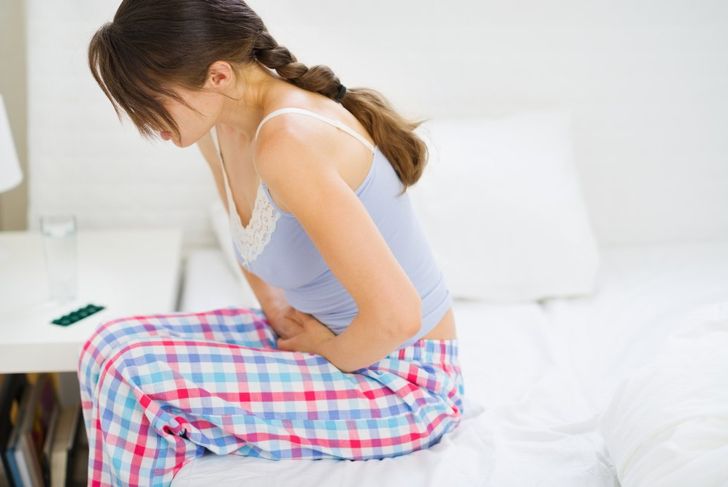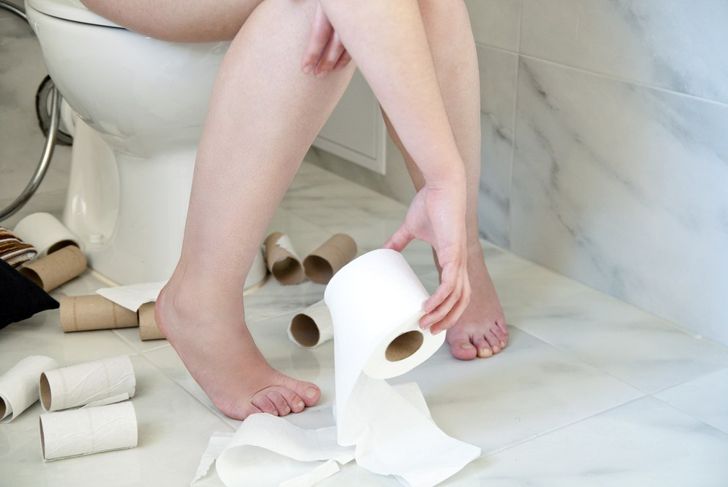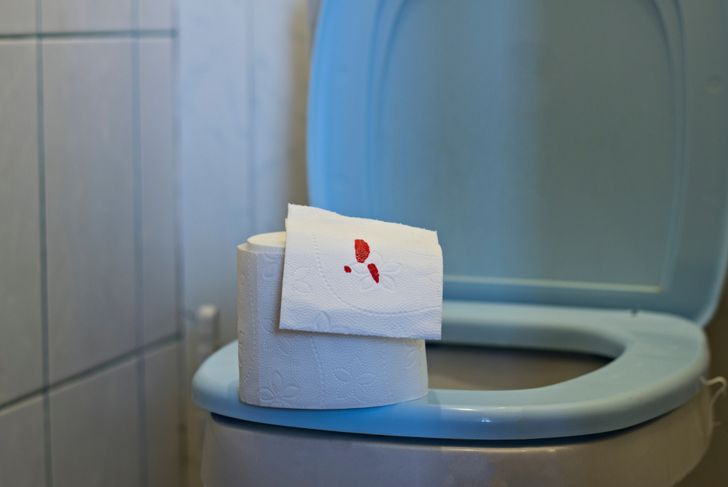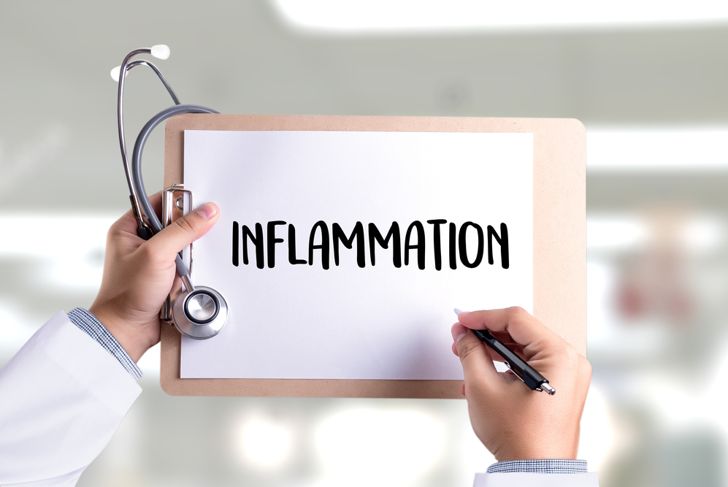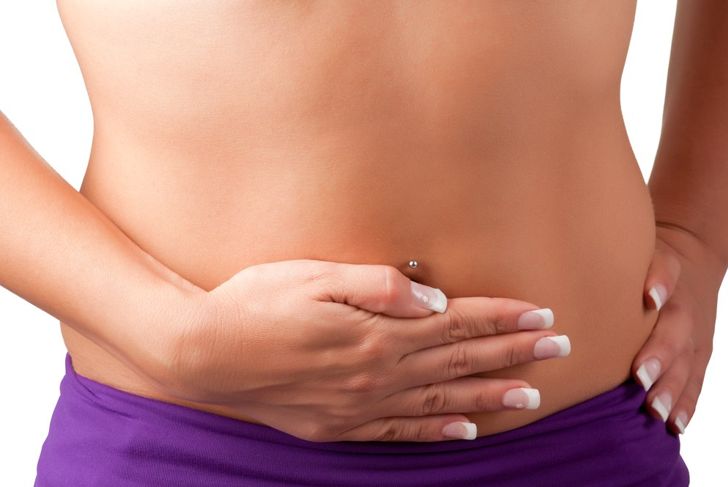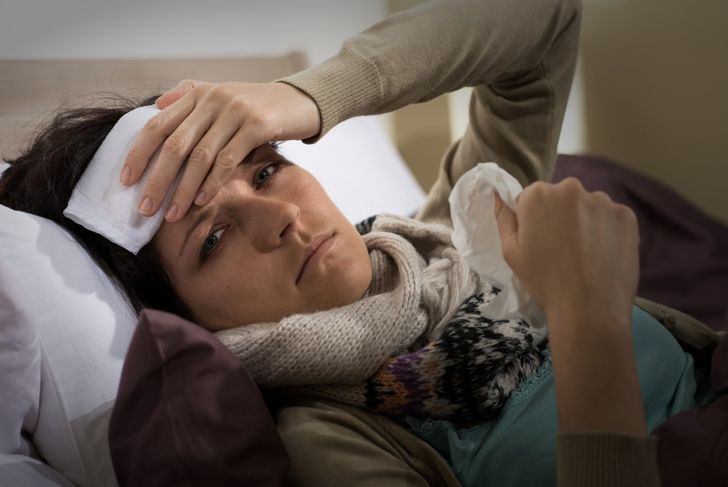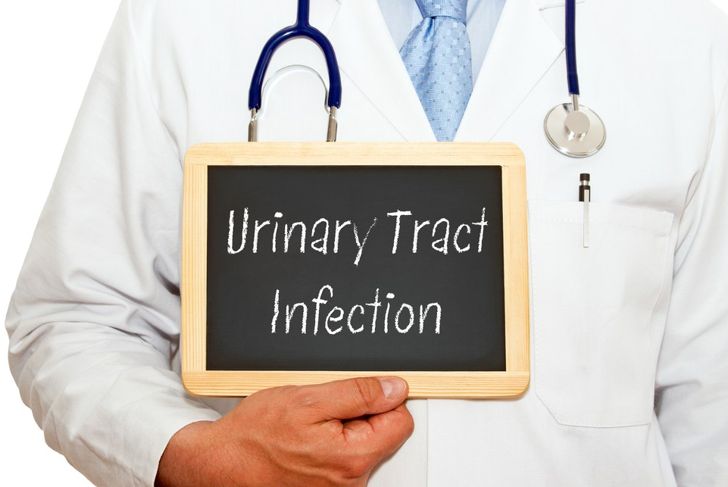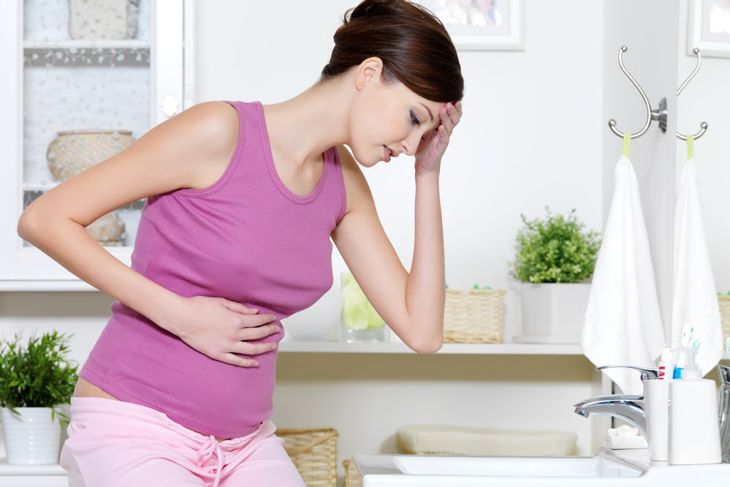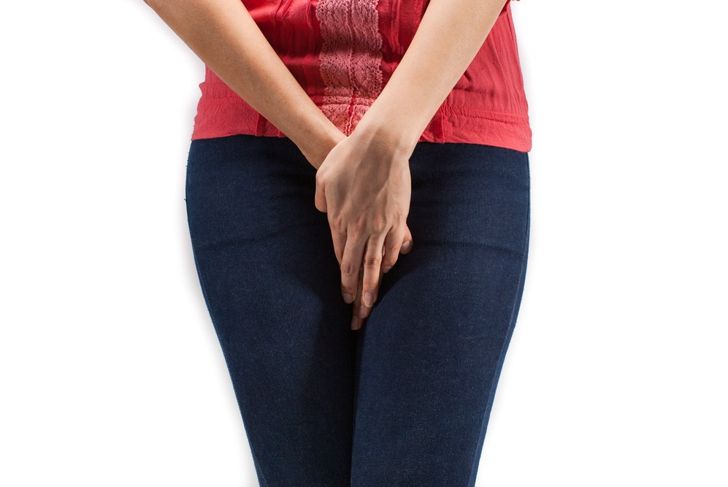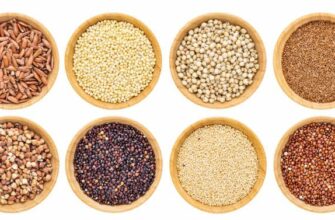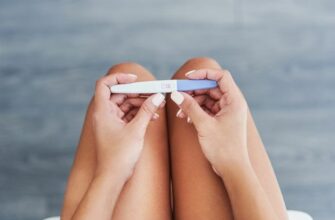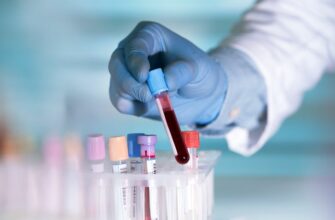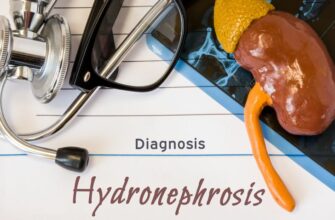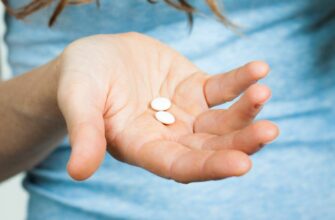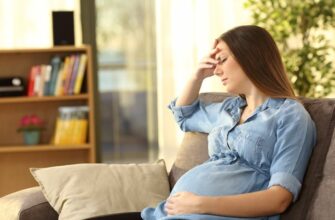Diverticulitis causes pea-sized, bulging pouches — diverticula — to form in the inner lining of the colon or large intestine and become infected and inflamed. Diverticulitis is distinct from diverticulosis, a condition where bulging pouches form in the colon but are not inflamed. In some cases of diverticulitis, the diverticula grow and place pressure on the internal walls of the colon. This can lead to serious digestive complications. Diverticulosis, the non-inflammatory condition, affects up to half of Americans by the time they reach 60. At one time, researchers believed up to 25% of people with diverticulosis develop diverticulitis, but a more recent study suggests the secondary condition affects as few as five percent.
Pain in the Lower Abdomen
Abdominal pain, which may persist for several days, is a common symptom of diverticulitis. People may experience abdominal distention, changes to bowel habits,and painful cramps. The pain mostly occurs in the lower left side of the belly. Some people, particularly those of Asian descent, experience pain on the right side due to the involvement of the right side of the colon.
Irritable Bowel
Explosive diarrhea with distressing cramps is another symptom of diverticulitis. Patients without noticeable inflammation or infection often experience constipation before diarrhea. Furthermore, strained bowel movements put pressure on the intestinal lining and weaken it, thereby increasing the risk of diverticulitis. Diarrhea occurs when diverticula develop in the intestinal lining and become infected and inflamed. This inflammation causes painful bowel movements. Stomach cramps, nausea, and upset stomach often co-occur with this symptom.
Bleeding From the Rectum
People with diverticulitis can develop rectal bleeding — feces can become caught in the diverticula, and small blood vessels can rupture. The clogged waste can result in heavy or gradual bleeding over time, which becomes visible in the stool. Anyone who experiences heavy rectal bleeding, a high fever, severe abdominal pain, or repeated vomitingshould seek medical treatment right away.
Inflammation
Inflammation and infection of the diverticula cause diverticulitis. The infection affects the weak areas of the large intestines, which can lead to prolonged retention of waste and, subsequently, inflammation. Distension of the lower belly caused by this inflammation can be a result of diverticulitis. Any added pressure in this region worsens the inflammation and can even cause shortness of breath.
Bloating
Diverticulitis can produce bloating and flatulence that may last for days or even weeks. The blockage of gas in a digestive system impaired by bowel inflammation can also cause bloating. Typically, people with the condition experience sporadic lower belly pain along with cramping and bloating. The gas pain can come and go, sometimes in throbbing waves. Bowel movements provide some relief from bloating. However, in the case of constipation, pain and cramping can be severe.
Fever
Some individuals with diverticulitis develop a high temperature. When chills accompany a persistent, unexplained fever, this may signal peritonitis, serious infection and inflammation of the thin tissue layer of the abdominal cavity. People with a high temperature and other diverticulitis symptoms should seek immediate medical attention.
Urinary Tract Infections (UTI)
In some cases, diverticula in the colon enlarge to the point that they put pressure on the bladder. This can mimic the symptoms of a urinary tract infection. The symptoms may include frequent urination and increased urgency to urinate. Less commonly, a tunnel or fistula can form between the bladder and the inflamed colon. This can lead to more severe urinary tract symptoms and other symptoms such as fever and chills.
Nausea and Vomiting
Another common symptom of diverticulitis is nausea, and people with the condition who also struggle with a sensitive digestive system may have periods of vomiting. This can make it extremely difficult to consume food and medicines when dealing with diverticulitis.
Loss of Appetite
Diverticulitis itself doesn’t cause loss of appetite, but its characteristic symptoms can. People who stop eating because their symptoms render them no longer hungry may experience unhealthy weight loss. Changes in bowel movements can result in feces lodging in the colon, which can further aggravate this symptom.
Burning or Pain During Urination
Occasionally, people with diverticulitis experience a burning sensation when passing urine. This can become a medical emergency if a fistula develops between the bladder and colon, causing gas or stool to leave the urethra.

 Home
Home Health
Health Diet & Nutrition
Diet & Nutrition Living Well
Living Well More
More